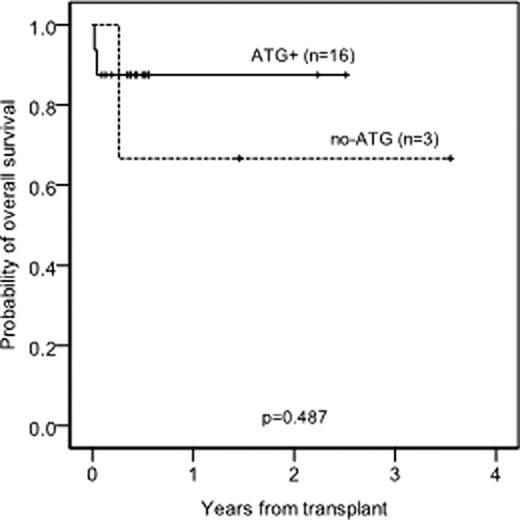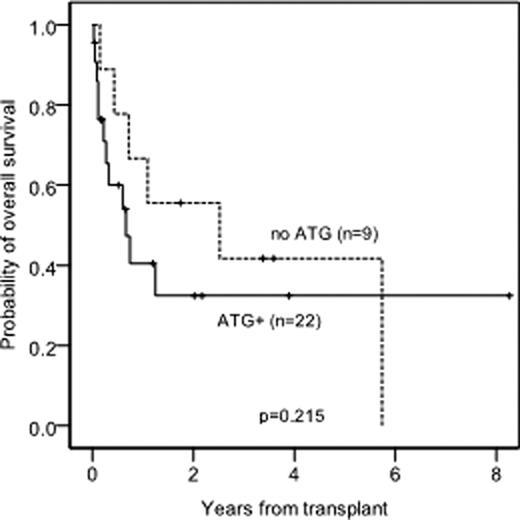Abstract
Abstract 3017
The outcomes of unrelated donor transplantation have improved with refinements in HLA testing. Recently, grouping of HLA matching for unrelated donor was suggested, defining by well-matched, partially-matched, and mismatched. In the current study, the role of ATG for each group was evaluated.
A total of 92 patients diagnosed as hematologic diseases and received allogeneic stem cell transplantation (SCT) from unrelated donor were retrospectively analyzed.
Nineteen patients were classified as well-matched, 42 as partially-matched, and 31 as mismatched. Among them, 57 patients received anti-thymocyte globulin (ATG) as graft-versus-host disease (GVHD) prophylaxis. The overall survival (OS) rate was higher for well-matched group (83%) compared to partially-matched (54%) and mismatched (34%, p=0.076). For partially-matched group, the OS was significantly improved with ATG (83.3% vs. 38.6%, p=0.018). But, the OS was not different between groups with or without ATG for well-matched (87.5% vs. 66.7%, p=0.487) and mismatched (32.4% vs. 41.7%, p=0.215). ATG decreased the cumulative incidence of grade 3–4 acute GVHD (10% vs. 40.2%, p=0.068) and severe chronic GVHD (21.2% vs. 52.2%, p=0.037). The use of ATG (HR=0.248, p=0.029) was related with favorable OS for partially-matched group. However, the favorable effect of ATG was not observed in well-matched and mismatched groups.
ATG effectively improved survival rate for partially-matched group in unrelated donor transplantation. However, the positive effect of ATG was not observed in well-matched and mismatched group.
Survival rate with ATG use
A. Well-matched group
B. Partial-matched group
C. Mismatched group
Survival rate with ATG use
A. Well-matched group
B. Partial-matched group
C. Mismatched group
No relevant conflicts of interest to declare.
Author notes
Asterisk with author names denotes non-ASH members.




